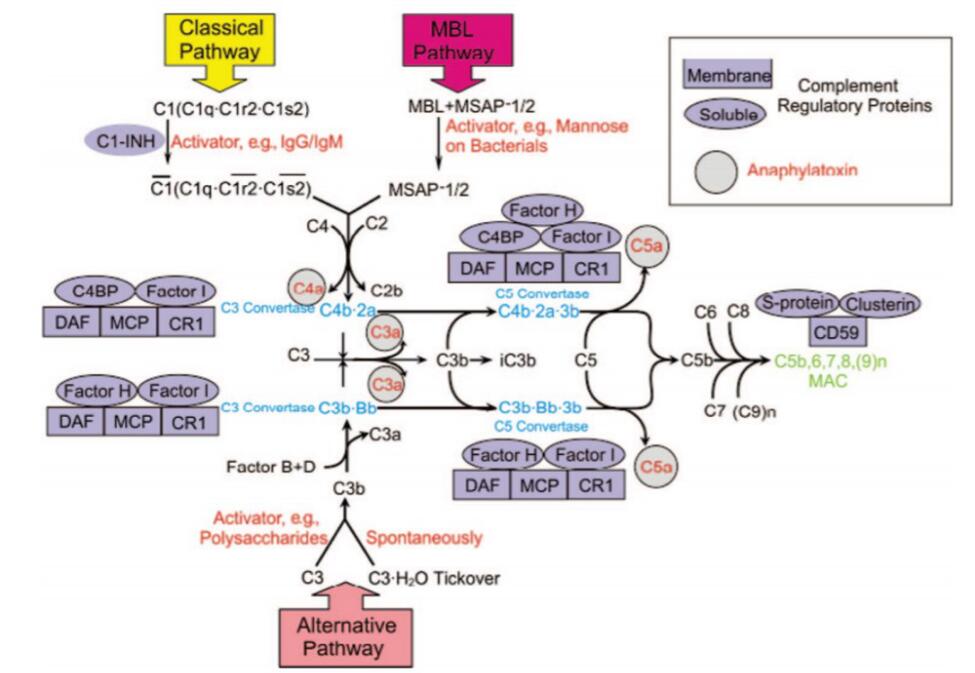Complement Component Assays
The complement system consists of a large number of plasma proteins that assist or complement the ability of phagocytic cells and antibodies to clear pathogens. There are three pathways of complement activation, namely the classical, the alternative and the recently discovered MB-lectin pathway. All three pathways lead to the formation of homologous variants of protease C3 convertase that cleaves C3 to form C3a and C3b. C3b is in turn part of the C5 convertase that cleaves C5 which eventually leads to the formation of the Membrane Attack Complex (MAC) or soluble Terminal Complement Complex, sTCC.
Further studies on the complement system have been focused on specific complement components. For example, C4d, a product of the classical and the lectin pathways, had been recognized as a biomarker for its stability and strong association with antibody-mediated rejection in the 1990s. In the last twenty years, the potential importance of C4d in systemic lupus erythematosus (SLE) as a tool for diagnosing and monitoring SLE was also highlighted. Complement factor H (CFH), as another example, is the first regulatory protein of the alternative pathway of the complement system. Genetic analyses reveal a clear association of CFH with different human diseases, including diseases of the kidney, the atypical form of Hemolytic Uremic Syndrome (aHUS) and membranoproliferative glomerulonephritis (MPGN), and of the eye, age-related macular degeneration (AMD).
Profacgen developed standardized assays targeting each complement protein, without cross-reacting with their related complement proteins. We also provide Complement Panels that are dependent on customizable selection of analytes, such as C2, C4b, C5, C5a, C9, Factor D, MBL and Factor I.
Featured Assay Targets
- Human Complement Panel 1: Adipsin, C2, C4b, C5, C5a, C9, Factor I, MBL
- Human Complement Panel 2: C1q, C3, C3b, C4, Factor B, Factor H, Properdin
- Complement Factor I
- Complement Factor B
- CFH
- Complement Component C5a
- Complement C4
- Complement C3
- Adipsin/Complement Factor D
- Human Neurodegenerative Disease Panel
- Human Circulating Cancer Biomarker Panel
 Figure 1 Three complement activation cascades.
Figure 1 Three complement activation cascades.
(Oncologist 2008)